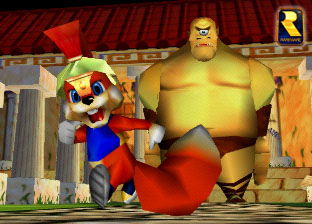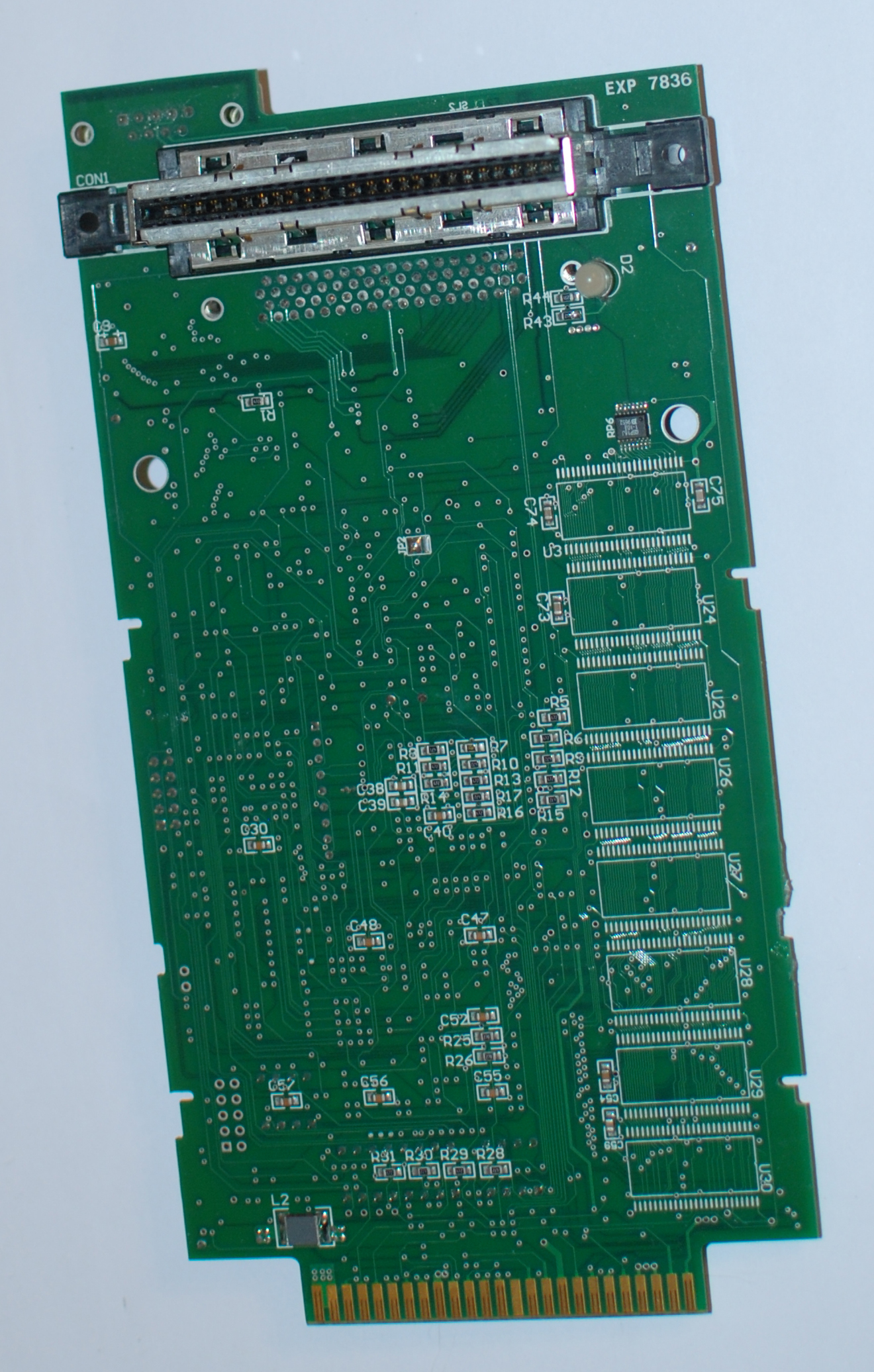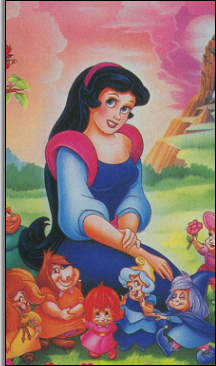Twelve Tales: Conker 64 (Unreleased, Nintendo 64)

First revealed at 1997’s E3 convention as Conker’s Quest, Conker 64 has had a long, wild development history. Before he became the foul-mouthed, womanizing pub-crawler in the Mature-rated Conker’s Bad Fur Day, Conker was a nice and nutty little squirrel who kept company with a cute chipmunk named Berri.

(Image source: Rare.co.uk)
Rare’s Cast List page, circa 1998, talked about Conker’s more innocent beginnings.
![]()

![]()
![]() He may look cute, but don’t let that fool you into thinking that Conker’s adventuring skills don’t match up to his enthusiasm. Just like his good friend Diddy, Conker is easily bored by the quiet daily routine of his treetop village, and he’ll seize any chance to go bounding off into the woods with catapult in hand. He’s as swift and athletic as any squirrel you’d care to name, and a crack shot with his weapon of choice – making him a formidable challenger to anyone who dares cross him…
He may look cute, but don’t let that fool you into thinking that Conker’s adventuring skills don’t match up to his enthusiasm. Just like his good friend Diddy, Conker is easily bored by the quiet daily routine of his treetop village, and he’ll seize any chance to go bounding off into the woods with catapult in hand. He’s as swift and athletic as any squirrel you’d care to name, and a crack shot with his weapon of choice – making him a formidable challenger to anyone who dares cross him…![]()
![]()
![]()

![]()
![]() Fond as she is of the endlessly energetic Conker, Berri has found that life’s much easier if she leaves him to his exploration when he starts to get itchy feet. Unless, that is, the reason behind it involves her too, in which case she’ll join in the quest with every last bit of determination she can muster. And whether Conker knows it or not, Berri’s a match for him in every way when it comes to adventuring – though she never could resist jumping in when something needed looking after…
Fond as she is of the endlessly energetic Conker, Berri has found that life’s much easier if she leaves him to his exploration when he starts to get itchy feet. Unless, that is, the reason behind it involves her too, in which case she’ll join in the quest with every last bit of determination she can muster. And whether Conker knows it or not, Berri’s a match for him in every way when it comes to adventuring – though she never could resist jumping in when something needed looking after…![]()
![]()

(Image source: Rare.co.uk)
Rare’s game page, also from that same year, delved more into what the critter couple’s kid-friendly adventure would have been like.

![]()
![]() He may have been pipped to the post of first Rare-published game by the speedy late ’97 release of Diddy Kong Racing, but it’ll take more than that to dampen Conker’s mood. In fact things are working out well for the feisty squirrel, with his debut appearance as a DKR competitor paving the way for his own epic adventures to follow – both on the Nintendo 64 and Game Boy (in the upcoming Conker’s Pocket Tales).
He may have been pipped to the post of first Rare-published game by the speedy late ’97 release of Diddy Kong Racing, but it’ll take more than that to dampen Conker’s mood. In fact things are working out well for the feisty squirrel, with his debut appearance as a DKR competitor paving the way for his own epic adventures to follow – both on the Nintendo 64 and Game Boy (in the upcoming Conker’s Pocket Tales).
 The team behind the game (largely made up of ex-KI team members, taking a well-earned break from violence and destruction) is doing everything imaginable to differentiate the antics of their chirpy mascot from those of both Mario and Conker’s stablemate Banjo. The ‘interactive cartoon’ aspect of Twelve Tales in particular is being pushed hard, with the vibrant scenery of the game world and the hugely varied themes of its areas (woodland, seafront, Wild West, Ancient Greek arena etc.) recalling some classic animated screen moments.
The team behind the game (largely made up of ex-KI team members, taking a well-earned break from violence and destruction) is doing everything imaginable to differentiate the antics of their chirpy mascot from those of both Mario and Conker’s stablemate Banjo. The ‘interactive cartoon’ aspect of Twelve Tales in particular is being pushed hard, with the vibrant scenery of the game world and the hugely varied themes of its areas (woodland, seafront, Wild West, Ancient Greek arena etc.) recalling some classic animated screen moments.
 The ’emotional’ angle featured in the game has also sparked a considerable amount of interest, finding itself the focus of many a press release. Conker and his female counterpart Berri the chipmunk each bear a range of emotions, just like any cartoon or real-life critter, and also a number of expressions with which to convey their mood: they’re fully aware of the game world and its dangers, and they can react accordingly. However, this also holds true for the bad guys… it’s a revolutionary system, and one which should carry the genre a few steps further up the logical path of its evolution.
The ’emotional’ angle featured in the game has also sparked a considerable amount of interest, finding itself the focus of many a press release. Conker and his female counterpart Berri the chipmunk each bear a range of emotions, just like any cartoon or real-life critter, and also a number of expressions with which to convey their mood: they’re fully aware of the game world and its dangers, and they can react accordingly. However, this also holds true for the bad guys… it’s a revolutionary system, and one which should carry the genre a few steps further up the logical path of its evolution.
And that’s just the tip of the iceberg where new features for this type of game are concerned. There’s a simultaneous two-player co-operative mode where separate players take control of Conker and his owl companion, a four-player split-screen deathmatch setup, and markedly different one-player games depending on whether you choose to play as Conker (arcade-style with a wide range of direct attacks on offer) or Berri (more strategy-led with a monster companion doing most of the rough stuff, provided you keep it well-fed and contented).
Twelve Tales: Conker 64 has been designed as an experience for all ages, the ‘moods’ structure allowing the player to manipulate the tone of the game and play in it any way he or she sees fit. If the name doesn’t ring any immediate bells, you may have been more familiar with the working title of Conker’s Quest, which was dropped recently (thanks mainly to overuse of the word ‘conquer’ in modern gaming and the tedious arguments that this can bring about). However, it looks as if the mischievous rodent star himself will be spared the indignity of a name change.![]()
![]()

(Image source: Rare.co.uk)
Nintendo Power Vol. 99 revealed that the plot would have entailed recovering 100 stolen birthday presents from a gang of woodland hoodlums, all the while rescuing forest friends along the way.

(Image source: Rare.co.uk)
Conker and Berri offered different play styles, with Conker preferring an action-oriented fighting approach through the use of his slingshot, and Berri, emphasizing more strategic gameplay by “nourishing and commanding a monster who does all the fighting for her.”

(Image source: Rare.co.uk)
They both would have been able to smash crates, carry rocks, and climb or shake trees.

(Image source: Rare.co.uk)
More than 50 villains, from Acorn Troopers to a Tyrannosaurus rex, would have roamed the four 3D worlds.

(Image source: Rare.co.uk)
Conker and Berri would have had seven various vehicles at their disposal.

(Image source: Rare.co.uk)
A multiplayer battle mode would have allowed four players to duke it out on bright, colorful maps (link).

(Image source: Rare.co.uk)
Initially slated for a Holiday 1997 release, Rare moved Conker’s Quest back to make room on store shelves for Diddy Kong Racing, a Nintendo 64 racing game in which Conker is a playable character.

(Image source: Rare.co.uk)
Early in 1998, Rare officially renamed Conker’s Quest to Twelve Tales: Conker 64. The game’s new scheduled shipping date was October 26, 1998.
Banjo-Kazooie came out that same year in late June.

(Image source: Rare.co.uk)
In response to critics’ complaining of “yet another cutesy title from Rare,” not to mention the growing perception that the Nintendo 64 was a “kiddie” console, the English developer delayed Conker 64 again to drastically retool the game.

(Image source: Rare.co.uk)
 In 1999, Conker’s Pocket Tales debuted on the Game Boy Color. Its story goes that a villain called the Evil Acorn has kidnapped Berri and stolen all of the presents at Conker’s birthday celebration. Conker must reclaim his gifts and rescue Berri or his party will be ruined. As this synopsis suggests, Conker’s first solo gaming adventure was geared towards younger players.
In 1999, Conker’s Pocket Tales debuted on the Game Boy Color. Its story goes that a villain called the Evil Acorn has kidnapped Berri and stolen all of the presents at Conker’s birthday celebration. Conker must reclaim his gifts and rescue Berri or his party will be ruined. As this synopsis suggests, Conker’s first solo gaming adventure was geared towards younger players.
 That tone would change in 2000. At E3 that year, Rare announced that the company was taking Conker in an entirely different direction with a gaming experience full of adult themes, violence, strong language, alcohol use, and sexual conduct. One stunned trade publication wrote, “It features, among other things, a squirrel that urinates to fend off enemies.” The game was planned for a fall release.
That tone would change in 2000. At E3 that year, Rare announced that the company was taking Conker in an entirely different direction with a gaming experience full of adult themes, violence, strong language, alcohol use, and sexual conduct. One stunned trade publication wrote, “It features, among other things, a squirrel that urinates to fend off enemies.” The game was planned for a fall release.
After one more delay, Conker was finally unleashed to North America on March 5, 2001 under the name Conker’s Bad Fur Day. Nintendo made sure to warn parents of the mature content in the game by plastering the following warning on the front of the box:
![]()
(Image source: Conker.com)
Nintendo Power did not review or even mention the game, and KB Toys refused to carry copies in its stores (link). A Playboy college tour and spring break tail-gate party kicked off the game’s gutsy word-of-mouth marketing campaign (link).
(Image source: Conker.com)
Conker’s Bad Fur Day would be Rare’s swan song on the Nintendo 64. In 2002, Rare’s founders, the Stamper brothers, sold off their controlling interest in the company to Microsoft. The Rareware era had come to an end.
Rare’s game output under Microsoft has been critically tepid at best. Perhaps as a result of the studio’s decline, fans began yearning for a return to its golden heydays with Nintendo. Once unmercifully mocked and written off, Twelve Tales: Conker 64 has taken on a new meaning of importance for many gamers, becoming one of the most desired and sought-after unreleased video games.

(Image source: Rare.co.uk)
Rumors of a Conker 64 prototype existing have spread around the Internet ever since an unnamed Rare game designer told Amazon.com in a 2001 interview, “There is a version of Conker’s in the Rare archives that nobody, save a select few sworn to absolute secrecy, will ever, ever see! Enough said” (link).
Although at least two Nintendo 64 prototypes of Conker’s Bad Fur Day are known to be in private hands, Conker 64 stayed missing until only recently.
In 2009, Kevin O’Connor, the founder and owner of the development collecting community ASSEMbler Games, claimed to have known someone who owned a copy of the long-lost Conker 64.
“I know someone with the beta of it but it would require serious cash,” O’Connor said. “Please don’t ask me for the contact, it’s way above $14K so why even ask” (link).
It is believed that this was an early build shown at the European Computer Trade Show that a Nintendo subcontractor used to own.
Some have speculated that a man from Bathgate, Scotland named Richard, who went by “Nintendomad”/”Mofoman” on the forums, purchased the prototype for an undisclosed amount of money. Shortly thereafter, he passed away at the age of 31.
I reached out to O’Connor to find out more information.
“Sold and long gone,” he told me. He thinks the selling price for the game was $12,000.
Nothing more was heard of Conker 64 until late 2011 when Brandon Williams, a Nintendo 64 collector from Grand Rapids, Michigan, acquired a batch of development cartridges and Wide-Boys (devices used by developers and the press to run Game Boy/Color/Advance games on a Nintendo 64) from a former Rare employee. According to him, the carts were ordered to be destroyed, but this anonymous employee rescued a number of them from the recycling bin before that could happen.
These Rare development carts were used to work on 512-megabit titles like the cancelled Dinosaur Planet and Twelve Tales: Conker 64. A few were even marked “Conker 64 only.”
This is not your typical Nintendo 64 prototype cartridge. It was made for in-house Rare use only, as is evidenced by the famous Rareware logo and the “RARE N64DEV V3 COPYRIGHT 1998” silk-screening on the long circuit board inside. The top of the cart is cut out to accommodate the larger-than-normal board.
The connector near the top of the board accepts another special Rare flash board that would have been used as a kind of memory card.
On the back of the cart, a DE-9 D-sub 9-pin connector was designed to accept different 6102/6105 CIC security chip dongles.
Another cutout was made in the back. Some of the Rare development carts were found to have two holes; the Conker 64 examples only have one.
Although the board can hold up to 64 megabytes, almost all of the chips (SEC KOREA 828) are SDRAM and not flash memory (the Intel 28F320 chip is the only flash memory chip, and given its 4 megabyte size, most likely contains nothing more than firmware).
And that is what makes this different from other prototypes. The development board would have communicated with a PC via an SCSI cable to run the game data. A computer at Rare would have stored the actual game, and this board would have loaded it temporarily. Once removed from that source, the memory is lost (the technical term for this is “volatile storage”). In other words, Conker 64 is no longer present; the board was simply a tool to transfer the game for short-term play-testing on a television.
These circuit boards were in all probability designed this way as a security precaution so that high-profiled games like Conker 64 did not escape Rare’s offices and give away potential trade secrets to competitors. A person would not only have to walk away with both the board and the computer with the data on it to get the game up and running at a remote location, he or she would also have to possess an understanding of how to operate the partnering software for the two to communicate with one another.
As it is, without a Rare computer and the software, the development board does nothing when inserted into a Nintendo 64 except emit a buzzing sound.
Nintendo was–and still is–notorious for keeping a tight leash on its first-party games, so it comes as no surprise that second-party prototypes would have been just as guarded.
The cart is tagged on the back with the numbers “20/2720,” which are etched right into the plastic. It is not uncommon for prototypes to be labelled with a unique ID code on a printed sticker so that companies could keep track of each cart’s whereabouts. That said, I have never seen a permanent etching like this one before.
No doubt an important piece in Rare’s history, it still drives me positively nuts knowing that builds of Conker 64 once ran on this cart in the past that can no longer be accessed. Conker and Berri are still squirreled away somewhere, trapped in an abandoned computer drive, or worse, wiped clean years ago, possibly around the same time when these carts were to be tossed out.
Those poor, helpless animals! And poor, helpless us!











